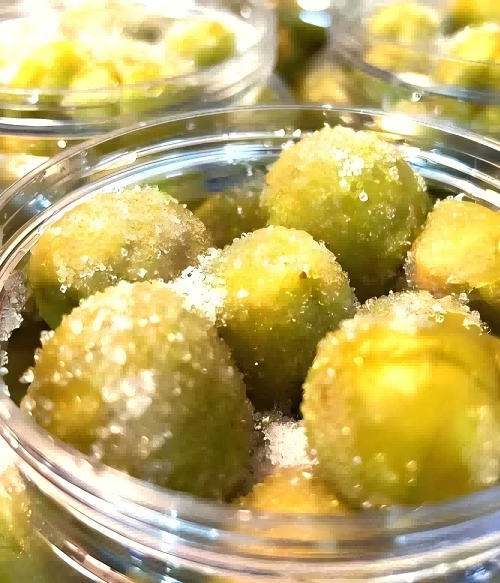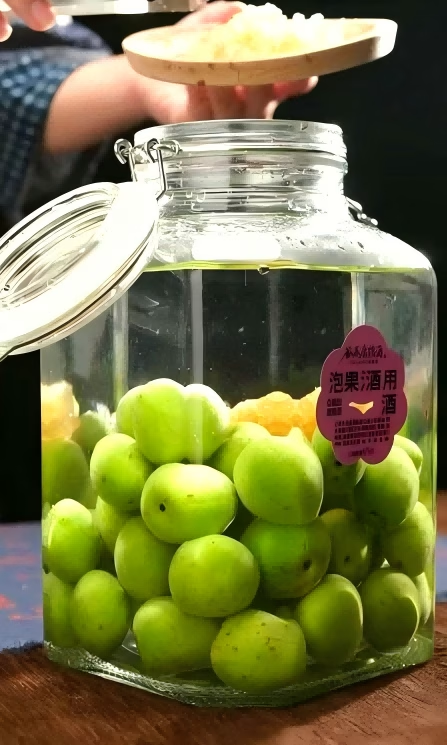How to make these homemade “crisp plums” and “plum wine” with plums. Find Chinese plum recipes here.
Nutritional Information about Plums
Chinese people rarely enjoy plums fresh. Instead, they are often processed before consumption. For example, they can be made into crispy plums, plum wine, plum preserves, and plum vinegar.
Plums contain nutrients such as dietary fiber, vitamin A, B vitamins, vitamin C, beta-carotene, potassium, calcium, and magnesium. They also contain organic acids and amino acids, making them highly nutritious. However, those with weak digestive systems or those with gastrointestinal ulcers should exercise caution when consuming them.
Are plums the fruit of plum blossoms?
Are plums the fruit of plum blossoms? The fruit of plum blossoms is indeed a plum. However, plum trees are divided into “flowering plums” and “fruiting plums.” Flowering plums are primarily ornamental, while fruiting plums are edible. Therefore, the plums we typically eat are primarily fruiting plums.
Plums are a plant of the genus Prunus in the Rosaceae family, found on hillsides between 400 and 1,200 meters above sea level. What are the differences between green plums and yellow plums? How do they differ in taste? What dishes are suitable for each?
Green plums: When first ripe, they are green, hence the name “green plums.” Harvested in late March, the fruit has a firm texture. They have a sour and crisp taste and are ideal for making crispy plums or pickled plums.
Yellow plums: When fully ripe, they are yellow, hence the name “yellow plums.” Harvested after the Qingming Festival, the fruit has a softer texture. With a slightly sour and sweet taste, plums are ideal for making honey plums, soft plums, aged plums, perilla plums, and plum wine.
How to make homemade “crisp plums” and “plum wine” with plums?
Crispy Plums

Ingredients
600g green plums
1000g sugar
60g salt
A pinch of coarse salt
Instructions
- Destemming: Remove the stems of the green plums and rub them with coarse salt for 10-15 minutes, until the skin darkens and the astringent liquid drains out.
- Cracking: Use a mallet or kitchen knife to crack the skin of the plums.
- Salting: Prepare salt water at a ratio of 1:10 salt to cold water. Soak the plums in the salt water for 6-8 hours. Stir the plums 2-3 times to evenly distribute the salt.
- Blanching: Rinse the plums under running water for about 2 hours.
- Dehydrating: Place the plums in a laundry bag and dehydrate for about 3 minutes.
- Candied: Boil sugar water and let it cool (refer to the sugar water ratio below for details).
- Soak the plums in the first batch of sugar water. Refrigerate for one day, then discard the sugar water and dehydrate the plums for 3 minutes.
- Soak the plums in the second batch of sugar water. Refrigerate for another day, discard the sugar water and dehydrate the plums for 3 minutes.
- Soak the plums in the third batch of sugar water for 10 days. Once ready, they are ready to eat.
- Sugar water ratio: For the first and second batches, use 250g sugar mixed with 750g water. For the third batch, use 500g sugar mixed with 600g water.
Plum Wine

Ingredients
2400g yellow plums
6 bottles (2400ml) of rice wine
1200g rock sugar
Instructions
- Wash and disinfect the container, wipe it dry, and label the bottle with the date of production.
- Remove the stems from the plums.
- Wash the plums with clean water and air dry, or lay them flat in a cool, dark place to air dry.
- Place the plums in a container and add the wine.
- Add rock sugar twice, once every three and five months.
- After soaking for at least six months, it’s ready to drink.
※The golden ratio for plum wine is “yellow plum: base wine: rock sugar = 1:1:0.5.”
※It’s recommended to use yellow plums for plum wine; the resulting flavor is more mellow and rich than that of green plums!

Leave a Reply